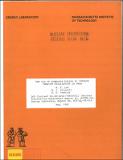The use of burnable poison to improve uranium utilization in PWRs
Author(s)
Loh, Wee Tee; Driscoll Michael J.; Lanning David D.
Download10716610.pdf (10.62Mb)
Alternative title
Uranium utilization Pressurized water reactors
Pressurized Water Reactors, Uranium utilization in
Other Contributors
Massachusetts Institute of Technology. Department of Nuclear Engineering
Massachusetts Institute of Technology. Energy Laboratory
United States. Department of Energy
Metadata
Show full item recordAbstract
A methodology based on the linear reactivity model of core behavior has been developed and employed to evaluate fuel management tactics for improving uranium utilization in Pressurized Water Reactors in a once-through fuel cycle mode on a consistent basis. A major focus has been on the benefit of using burnable poison in conjunction with low-leakage fuel management schemes. Key features in the methodology, such as power weighting of batch reactivity values and correlation of neutron leakage effects with peripheral assembly power, were verified against results generated using detailed state-of the- art computer analyses. A relation between batch power fraction and batch reactivity was derived from a 1/2-group diffusion theory model, and similarly validated. These prescriptions have been used in two ways: to develop analytical models which allow quick scoping calculations; and, programmed into a code, to facilitate more rigorous applications. The methodo!
logy has been applied to evaluate fuel management schemes of contemporary interest, such as the use of burnable poison to shape the power history profile, the use of low-leakage fuel loading patterns, and extended cycle length/ burnup, and combinations of these individual schemes. It was found that shaping of the power,history profile in a low-leakage assembly pattern by means of burnable poison, even after accounting for the anticipated residual poison reactivity penalty, has the potential of increasing PWR discharge burnup, and hence uranium utilization by roughly 1%. The overall improvement in uranium utilization for a low-leakage loading over that for the current out-in/scatter scheme, was about 3.6% for current cycle lengths (3-batch, discharge burnup ' 30,000 MWD/MT), and approximately 11.1% for extended cycle operation (3-batch, discharge burnup u 50,000 MWD/MT).
Description
Also presented as author's dissertation in substantially the same form. (Nuc. Eng., Ph. D., 1982) Includes bibliographical references (pages 246-249)
Date issued
1982Publisher
Cambridge, Mass. : Massachusetts Institute of Technology, Energy Laboratory, 1982
Series/Report no.
Energy Laboratory report (Massachusetts Institute of Technology. Energy Laboratory) ; no. MIT-EL 82-014MITNE ; no. 250